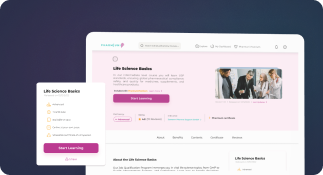Quality Management System (QMS)
Definition
A Quality Management System (QMS) is a structured framework of policies, processes, and procedures required for planning and execution in the core business area of an organization, particularly within regulated industries such as pharmaceuticals and life sciences. A QMS ensures that products and services meet customer and regulatory requirements consistently, improving overall performance and fostering a culture of continuous improvement.
In the pharmaceutical industry, a QMS is essential for compliance with Good Manufacturing Practice (GMP) and other regulatory requirements, helping to maintain product quality, patient safety, and operational efficiency.
Detailed Explanation
Purpose and Importance of a QMS in Pharma and Life Sciences
The primary goal of a QMS in the pharmaceutical and life sciences sectors is to ensure that products are developed, manufactured, and distributed in a way that meets predefined quality standards and complies with applicable regulatory requirements. A robust QMS supports:
- Regulatory compliance with agencies like the FDA, EMA, and WHO
- Risk management and mitigation of quality-related issues
- Operational consistency and process standardization
- Data integrity and traceability
- Customer satisfaction through reliable product quality
Key Components of a Pharmaceutical Quality Management System
A comprehensive QMS typically includes the following elements:
- Quality Policy and Objectives: High-level goals and commitments to quality.
- Document and Record Control: Management of SOPs, batch records, and quality documentation.
- Change Control: Procedures for managing changes to processes, equipment, or documentation.
- Corrective and Preventive Actions (CAPA): Systematic investigation and resolution of deviations and non-conformities.
- Training and Competency: Ensuring staff are qualified and trained for their roles.
- Internal Audits: Regular reviews to assess QMS effectiveness and compliance.
- Deviation and Incident Management: Handling unexpected events and out-of-specification results.
- Supplier Quality Management: Qualification and monitoring of vendors and third-party providers.
- Product Lifecycle Management: Oversight of product development, manufacturing, and post-market surveillance.
Application Across the Product Lifecycle
A QMS spans the entire product lifecycle from development through commercialization and post-market monitoring. For example:
- During clinical development, a QMS ensures data integrity and protocol adherence.
- In manufacturing, it governs batch production, quality control testing, and equipment calibration.
- Post-market, it supports pharmacovigilance and complaint handling.
Regulatory Expectations and Guidelines
Regulatory bodies provide guidance on QMS implementation. For instance:
- The ICH Q10 guideline outlines a model for a pharmaceutical quality system applicable across the product lifecycle.
- The FDA’s 21 CFR Part 210 and 211 regulations define current Good Manufacturing Practice (cGMP) requirements for drug products.
- The EU GMP guidelines (EudraLex Volume 4) specify QMS expectations for manufacturers in the European Union.
Benefits of Implementing a QMS
Organizations that implement a robust QMS in the pharmaceutical and life sciences industries can achieve:
- Improved product quality and consistency
- Faster regulatory approvals and fewer compliance issues
- Reduced costs from waste, rework, and recalls
- Enhanced reputation and customer trust
- Increased operational efficiency and employee engagement



